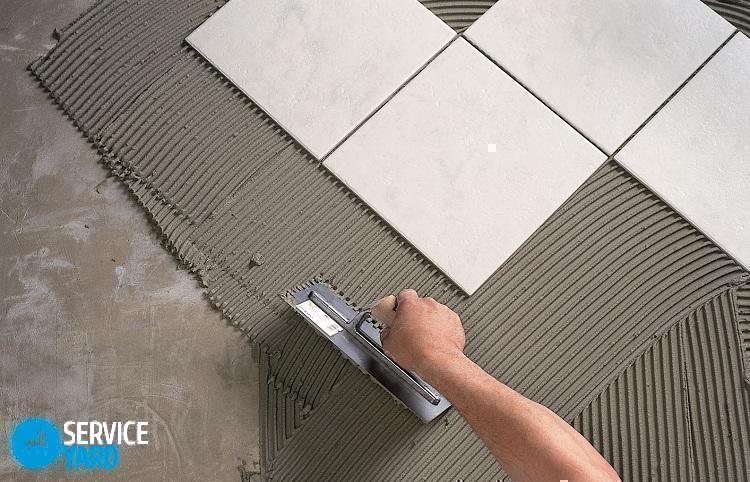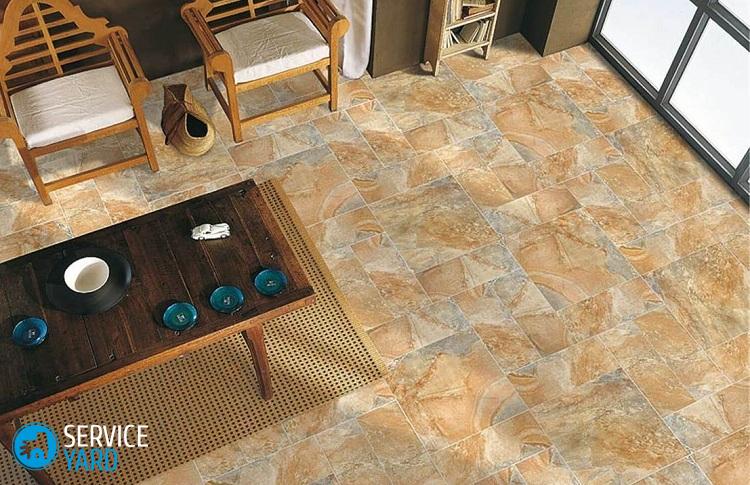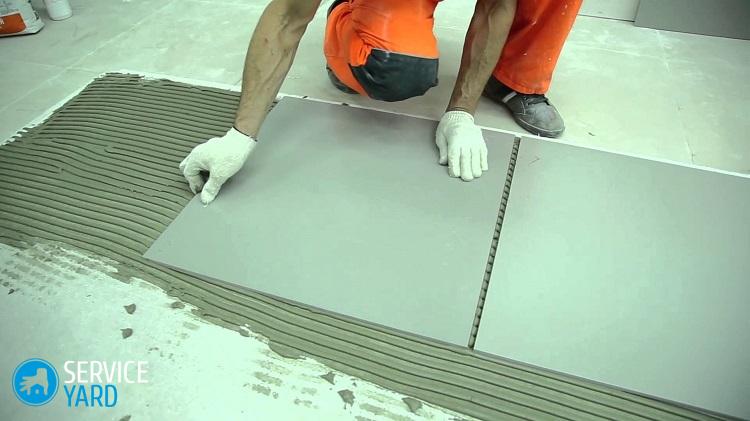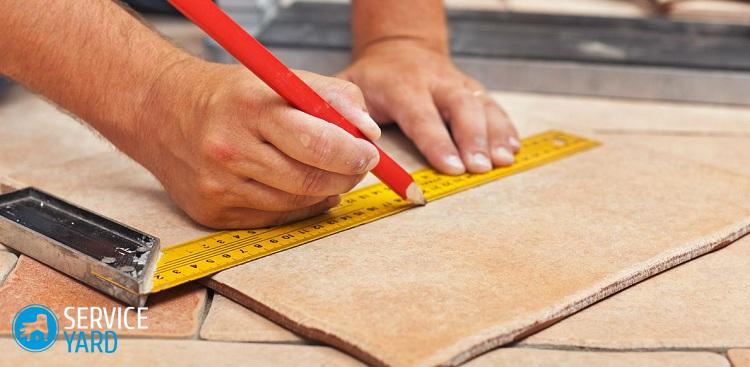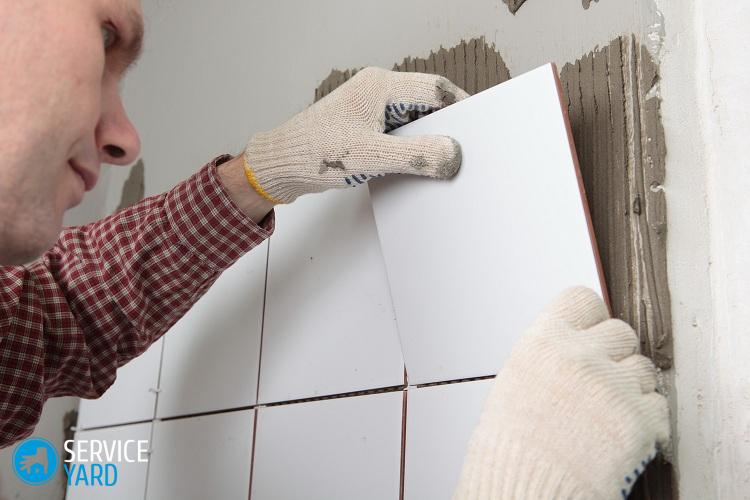Glue consumption for tiles per 1 m2
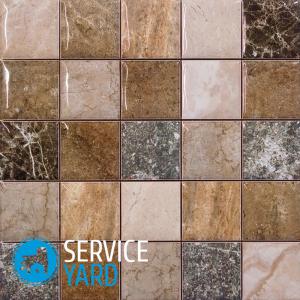
The use of ceramic and porcelain tiles is one of the most common ways to decorate a kitchen, bathroom and bathroom. For laying tiles, in addition to himself, additional consumables are required, the most important of which is tile glue. Most often, we do not hesitate to buy as much glue as the seller advises in the store. What to do if you doubt that 20 bags of 5 kg are slightly more than you need, or the words of the master tiler, performing the repair work, raise doubts? We will talk about how to independently calculate the glue consumption for tiles per 1 m2 and not be cheated, in this article.
to contents ↑Factors Affecting Adhesive Consumption
Usually, all important decisions regarding the purchase of building materials are made directly in the store, not without the influence of consulting staff, or with the help of workers who carry out repairs. But what if repairs are done on their own, on their own? It’s almost impossible to calculate all the expenses in advance for all the work, but calculating the amount of materials and the cost of laying the tiles is quite a task.
Important! First you need to understand that tile adhesive is measured in kilograms (kg). And the required amount will be equal to the cost of the produced solution per square meter (m2) and the total laying area. Knowing the footage of the wall or floor on which the installation is done, you only need to calculate the required thickness of the mixture and then get the desired number of glue.
Types of glue
Glue for a tile happens several types - with the content of cement, polyurethane or epoxy.
If the cement-based mixture is quite simple in its application: 3 kg per 1 m2, then polyurethane and epoxy are not so easy to understand how much adhesive is needed for tiles per 1 m2. The epoxy compound is mixed from two components, and the polyurethane has a rather elastic structure. In addition to the main components, the mortar for tiles has a variety of additives in its composition. This positively affects its certain qualities under the influence of various factors, and can also change its consumption. When choosing a tile adhesive, you need to carefully study the range and list of brands available in your area.

Important! The flow rate of the mixture is affected by both the size of the tile and the material from which it is made.
We take into account the important points:
- The surface size of the ceramic plate. If it is large, then the consumption of tile glue per 1 m2 as a result will be much more. Accordingly, a larger thickness will require more mortar than when using tiles of standard sizes. For example, if the side size of the rectangle is 25 cm, then the thickness of the adhesive layer to hold it should be 2-3 mm. If the size is even larger, then the thickness of the solution layer must be increased.
- Material. The material of the tile has a porous surface into which the mixture is quickly absorbed. And porcelain stoneware, on the contrary, has little adhesion and weakly absorbs the solution.
- Flatness of the surface. On an even plane, a layer of building mixture is needed less than on a corrugated one.
- The quality of the base. The tile should be laid on a flat surface - this will avoid uneven waste of the solution, unless the glue contains particles that help level the surface.
to contents ↑Important! The amount of glue even depends on the skills of the stacker, his qualifications.For beginners, the norm is usually violated, because a large amount of the building mixture will go to marriage.
Approximate calculation of tile adhesive per 1 m2
There are various ways to calculate the required amount of mortar without the help of sales consultants. Many solution manufacturers have a special calculator. He will help to independently carry out the calculation, knowing the type of ceramics and the size of the laying area, as well as a suitable brand of adhesive base.
Important! The easiest way, when the brand of glue is precisely determined, work with it was carried out many times, for example, the well-known brands Ceresit, Knauf. To more accurately calculate how much glue is needed for tiles per 1 m2, you need to go to the resources of these brands on the Internet and enter the parameters of the tile and the brand of building composition in the online calculator. The result should be multiplied by the number of square meters of the surface to be coated, for example, by 10, if the area is 10 m2.
If there are no preferences in the name of the brands, but are interested in how much the laying of the tile will cost, then you can roughly calculate:
- For example, a cement-based mixture.
- The approximate dimensions of the tile are 30 by 30 cm.
- If the layer is 2.8 mm, then the consumption will be 5 kg per 1 m2.
- If the tile will be laid on an area of 10 m2, then 10 times 5 and get 50 kg of tile adhesive.
The method used by sales consultants is in this case they distribute the average value (thickness x0.5) of the mixture consumption per 1 mm of the brand chosen by the buyer. Information on adhesives of well-known brands can be found in the public domain.
Important! If the tile is made of porcelain stoneware or plononite, then when calculating the flow rate during installation, take into account its average size, namely, a thickness of 10 mm.
But, based on such a calculation, it is impossible to talk about the exact cost. It is necessary to recalculate again using more accurate data. You should always remember that manufacturers keep all the necessary information publicly available.
to contents ↑How much glue is needed for tiles per 1 m2 of porcelain tile?
The amount of mixture for ceramics or porcelain stoneware will depend on the maximum length of the sides and the size of the tooth of the spatula comb, which distributes the adhesive composition over the surface.
Important! The average consumption rate of tile adhesive per 1 m2 of tiles is 1.3 kg.
An example of adhesive consumption for the Ceresit brand:
- For Ceresit CM9 glue, for tiles with a large side of 10 cm, with a spatula with a tooth of 4 mm, the mixture consumption per 1 m2 will be 2 kg. When using 15 cm of elements and a spatula by 5.8 mm, this value will already increase to 3 kg. And if you take the dimensions of tiles of 30 cm and a spatula of 9 mm, then all 4.3 kg.
- For a small tile and porcelain tile there will be approximately the following values: 5 cm elements treated with a 2.8 mm spatula will take 1.8 kg.
- For large tiles or porcelain tiles, respectively: 60 cm - 13 mm - 6 kg.
to contents ↑Important! Experienced craftsmen can apply the solution to the tile, holding a hand with a trowel at the required angle so that the mixture is distributed evenly with a thin layer. This contributes to the fact that the result is a result close to the norm of consumption of tile glue.
Stock footage
After reading the instructions and deciding on the size of the tile, choosing the right tool, you can start laying. The thickness of the solution layer will decrease with the acquisition of skill. Neat seams and even consumption of the building mixture causes only positive emotions.
- How to choose a vacuum cleaner taking into account the characteristics of the house and coatings?
- What to look for when choosing a water delivery
- How to quickly create comfort at home - tips for housewives
- How to choose the perfect TV - useful tips
- What to look for when choosing blinds
- What should be running shoes?
- What useful things can you buy in a hardware store
- Iphone 11 pro max review
- Than iPhone is better than Android smartphones



